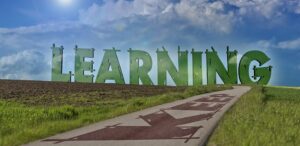
Graduate Outcomes Require Revised Systems
Pam Sornson, JD
September 5, 2023
For decades, California’s higher education system has focused on three primary goals:
-
- Preparing students academically to achieve their educational goals,
- Facilitating a smooth path from a two-year to a four-year school for learners who choose that path, and
- Enhancing the college life experience for all its scholars.
Recent developments, however, suggest that adding a fourth perspective to this list of initiatives may be in order:
-
- Facilitating a smooth transition from school to work by training students in the skills and abilities they’ll need to succeed in the occupation of their choice.
Essentially, the fourth initiative suggests including ‘career readiness’ as a new and independent factor in the higher education ‘student success’ metric.
The chaos created by the pandemic, ongoing economic instability, and disrupted social systems have created a ‘perfect storm’ of crises that require immediate attention to save the country from further financial disaster. However, they also present a unique opportunity to build a new economic infrastructure on what is left of stable foundations that will drive growth now and in the future.

In the Spotlight: Gaps in and Misalignment of the Education/Industry/Economy Landscape
Pasadena City College is hosting its 5th Annual Future of Work Conference next month (8 AM to 2 PM, October 26 on campus in the Creveling Lounge – register here), and the focus of this year’s discussion is how to better align community college activities to ensure graduates find – and succeed at – the job they want in the field of their choice. It promises to be a spirited and well-informed dialogue.
Just one of the several topics that will be discussed is the surprisingly high number of recent college graduates reporting that they are not working within their field of study. When parsed out across educational classes (Associate, Bachelor, Masters, and Doctorate degrees and Trade School certifications or diplomas):
Less than 60% of Doctorate and Masters grads are employed full-time in the industry in which they majored, a reality shared by 50% of Bachelor’s holders, 43% of Associate degree awardees, and 33% of Trade School completers.
Those with part-time employment in their field report even less success: 28% of Associate grads, 22% of Bachelor’s, 20% of Master’s students, 11% of Trade School grads, and 6% of Doctoral recipients.
Finding a full-time job has been difficult anyway: across the higher educational slate of academic achievements, full-time work in even an unrelated field averages only 13%.
The reasons given by many college graduates as to why they are unable to find work in their chosen occupation are equally interesting:
Their educational path – the programs they chose and pursued – didn’t provide them with the training that they actually needed.
There were no programs available that covered the particular type of work available, so there was no way to learn its requisite skills.
The jobs they want now don’t yet have training programs in place.
The statistics appear to indicate a significant disconnect between college achievement and career attainment – graduates are not leaving their school years fully prepared for their chosen occupation. Today’s challenge, then, is to identify where that disconnect is happening and implement reforms to eliminate it.

It Takes a Village …
… to train a workforce. Generating a practical and functional ‘career readiness’ strategy will require input from more than just school personnel. A thorough understanding of current and future workforce expectations comes from interacting with all players within the workforce development environment:
There may be an insufficient number of jobs in specific fields of study. Job volumes evolve as the demand for those skills ebbs and flows; some occupations may simply be becoming obsolete.
Academically attained skill sets might not match those needed in the field of study. Industry standards are changing rapidly, and new requirements may not yet be reflected in the course curricula.
It may not be the subject matter education that’s insufficient, either. Some reports indicate that graduates didn’t know how to find work in their chosen field, even if it was available.
These concerns suggest several responses that schools could take that would work in favor of future higher education students. Overhauling internal systems to match industry and occupation requirements will provide better support for and reflect their attention to their learner’s ‘career readiness’ goal.
Investments in resources that clarify occupational demand and availability would facilitate tailoring program offerings to those that show the most promise for high employment numbers.
Use the ‘occupation demand’ data to craft more flexibility into their existing programs and build new ones that accommodate those progressions.
Use industry experts to inform and design these programs that both train to current skill sets and provide work-based learning opportunities.
Embed on-the-job training in degree, diploma, and certificate requirements, then build out the systems that connect learners to these resources.
Rework their internal student success metrics to reflect occupationally relevant data, not just attendance, grading, and credit attainment statistics.
Ultimately, responses to today’s fraught economic and social situations may require adopting a new focus for California’s higher education system. In a 2019 report, the Public Policy Institute of California listed “eight key areas” that reflect the State’s ‘most pressing higher education challenges.’ Of the eight, the top six initiatives focus on improving the college experience, while the last two on the list address workforce needs and career education. While the first six are laudable and certainly imperative within the sphere of college and university practices, they might be considered not just goals in and of themselves. Instead, the six initiatives might also be seen as interim objectives to be met on the way to achieving the ultimate goal as identified in the last two: responding to California’s workforce needs by strengthening career education.
Today’s ‘student success’ metrics track the data that reflects how learners are faring on their educational journey. However, it’s no longer good enough for a college to simply improve its diversity, completion rate, and accessibility if its broader graduate population isn’t also successful in attaining its occupational and career aspirations. Student success metrics should also report on the effectiveness of how well that educational journey facilitates the launch of a successful worker who contributes positively to their greater community.


